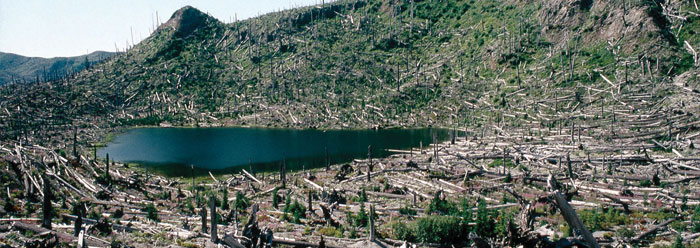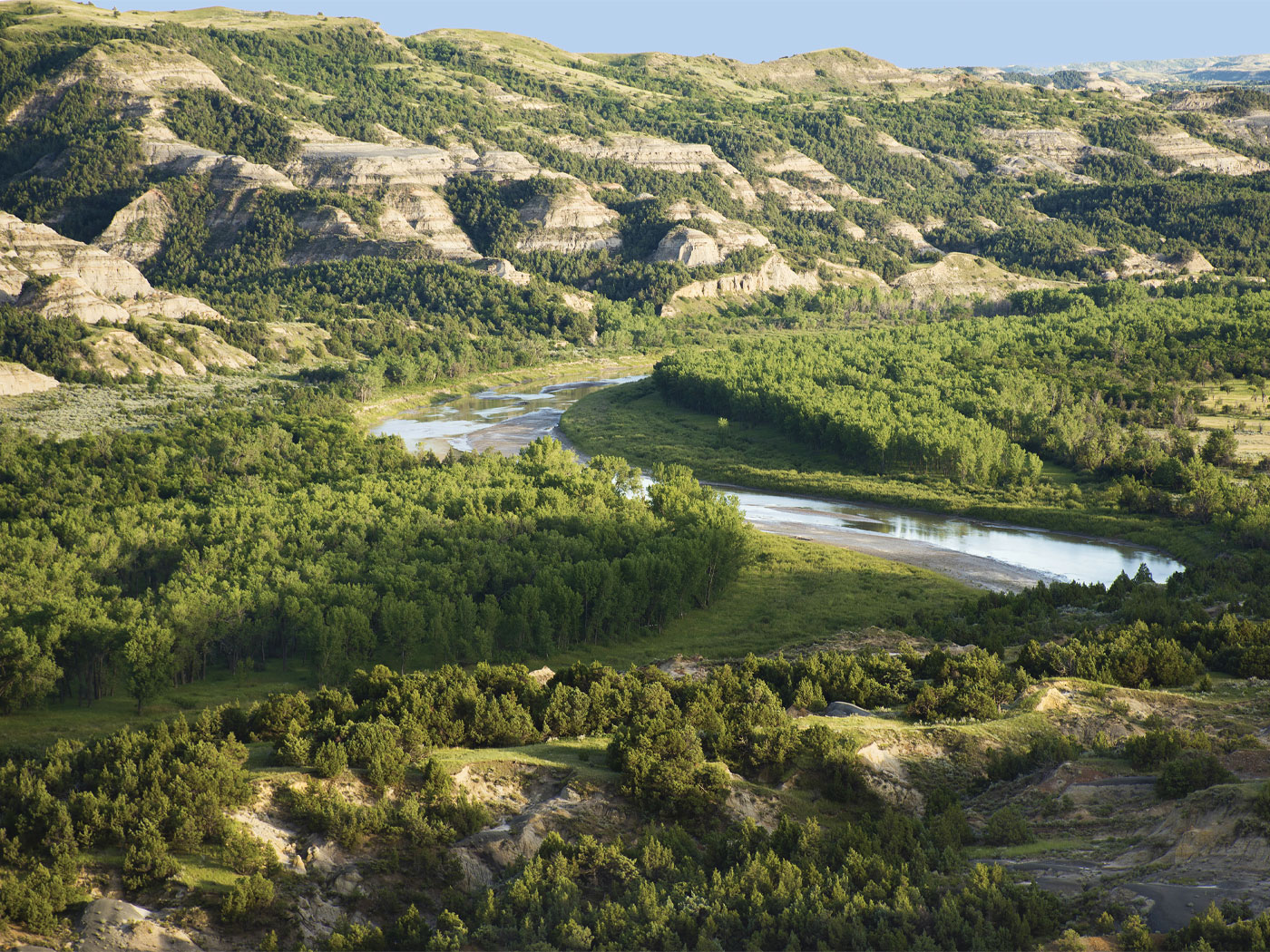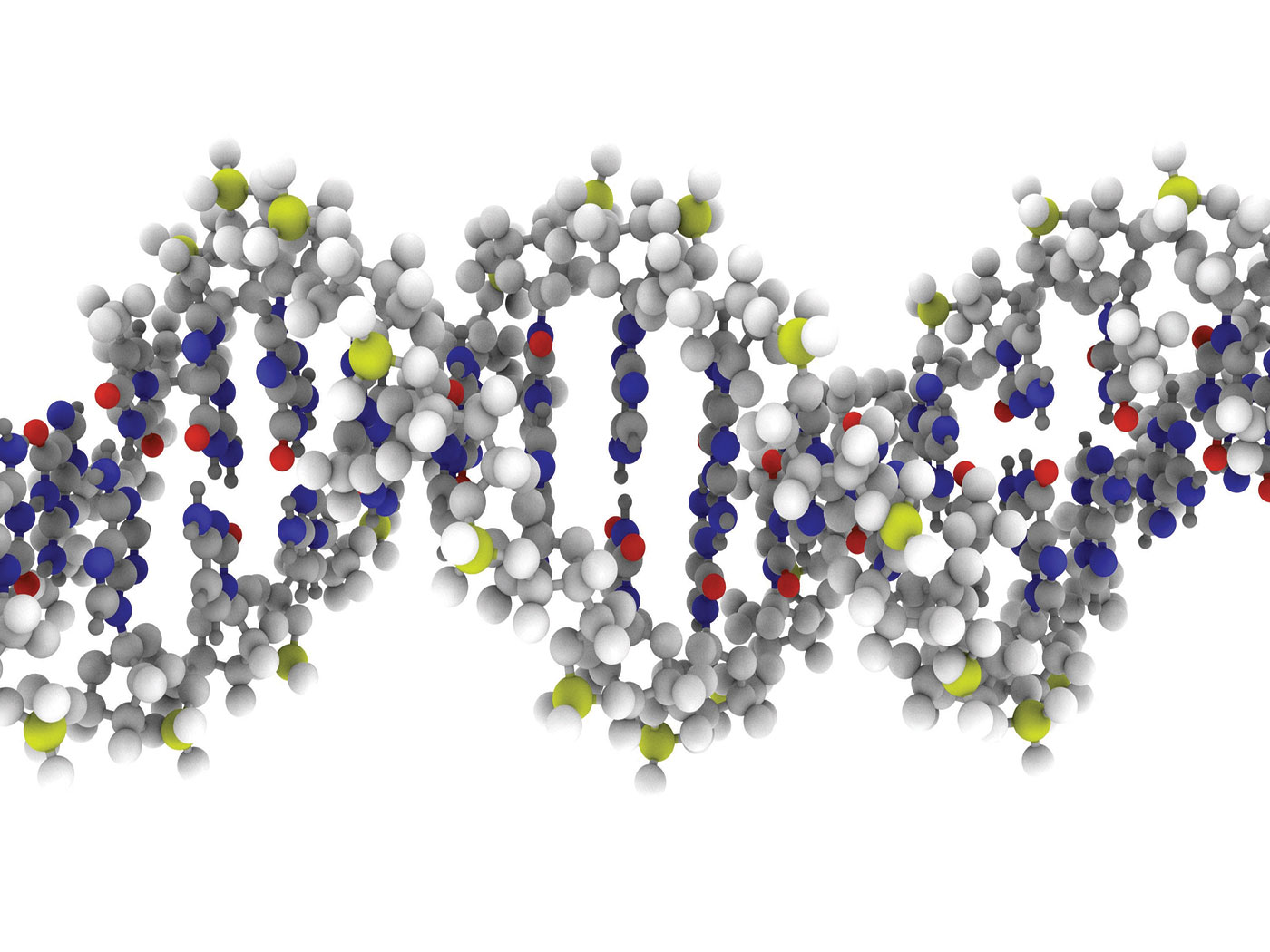Fungi are single or multi-celled organisms that break down organic materials, such as rotting wood, in order to absorb their nutrients. Neither plant nor animal, they range from mushrooms to single-celled yeast.
Scientists were investigating organic chemicals trapped in an Italian sedimentary rock formation when they found evidence that an extinct fungus feasted on dead wood during a time when the world’s forests had been catastrophically eradicated.1 What could have caused such a universal effect on forests, and why does organic material remain in rocks that are supposedly 251.4 million years old?2
Researchers from the U.K., U.S., and the Netherlands collaborated to identify the organic microfossils of tiny remains. The cell shapes are still discernable, including their chain-like fibrous forms. These organisms, called Reduviasporonites, have been the subject of a longstanding debate: were they fungi or filamentous algae? Chemical analysis has convinced some researchers that they were algae, but the new research makes a case that the enigmatic microfossils were actually fungi.
If Reduviasporonites were algae, then their widespread distribution around the globe would indicate that the world was dominated by “ponding and swamping.” However, if they were fungi, then the globe was dominated by “massive loss of standing biomass”―a worldwide deforestation catastrophe.3 Intriguingly, the global nature of the great Flood, as described in Genesis, matches the universality of either scenario.
The scientists associated the timing of this fungus’ proliferation on earth with the Permian-Triassic extinction event, wherein about 96 percent of marine and 70 percent of land organisms went extinct. At that time, “the world’s forests were wiped out,”1 providing a planet-wide food source for the fungus.
The catastrophe has been associated with a tremendous, continent-sized lava flow that made what is known today as the Siberian Traps. This covers an astounding 100,000 square miles of Siberia. In 1991, the flow was implicated as a possible trigger for worldwide extinction.4 In this view, the toxic fumes from the massive lava fields created enough acid rain to kill earth’s forests. But if this hypothesis is correct, why were more marine creatures exterminated than land creatures? It should seemingly be the other way around.
Mark Sephton, lead author of the current fungus study published in the journal Geology,3 said in an Imperial College press release, “Ironically, the worst imaginable conditions for plant and animal species provided the best possible conditions for the fungi to flourish.”1
The chemical analysis was performed with an instrument sensitive enough to measure tiny amounts of carbon and nitrogen, including their isotopes. Did these elements come from the bodies of the original microfossils, or were their well-preserved cell wall shapes comprised of replacement material?
Similar to the chemical analyses of dinosaur soft tissue, including well-characterized collagen found in “fossil” dinosaur bone, the existence of organic cell wall material from so long ago presents a challenge to the age interpretation of millions of years assigned to the remains.5 Fungus has chitin in its cell walls, and insects (arthropods) also have the chemical chitin in their outermost protective cuticles.
The study’s authors noted the conundrum presented by having any chitin at all still trapped in rocks. They said that “extensive organic-geochemical analyses” show that chitin decays rapidly and should not persist for very long. “Paradoxically, however, well-preserved fungal remains as well as arthropod cuticles have a long fossil record.”3 But the presence of chitin in sedimentary rocks is not a paradox; it is a direct contradiction of the long ages assigned to the strata.
The authors noted that a “more resistant” organic material could have replaced the original chitin, and they showed evidence that this may have occurred after the widespread deposition of Reduviasporonites.3 However, there is no confirmation that even this replacement material would have been able to resist the nitrogen and carbon cycles over such vast times, nor that these fossils consist of such replacement material.
A Genesis Flood model might incorporate all of this data with fewer assumptions. From the account given in the biblical text, more land creatures would have survived than marine creatures, since land creatures were preserved on a giant barge. And when “the fountains of the great deep [broke] up,”6 hot mantle material—including lava, steam, and water―would have been ejected up through earth’s crust. This singular destructive event would have provided the tremendous energy required to have made a Siberia-sized lava flow.
According to most Flood geologists, the fossil-bearing rock strata were deposited during the Flood year. And the recent occurrence of the Flood, as determined by biblical chronology, answers the question of why such short-lived Reduviasporonites chemicals persist in sedimentary rocks up to this day.
References
- New ancient fungus finding suggests world’s forests were wiped out in global catastrophe. Imperial College London press release, October 1, 2009.
- Jin, Y. G. et al. 2000. Pattern of Marine Mass Extinction Near the Permian–Triassic Boundary in South China. Science. 289 (5478): 432–436.
- Sephton, M. A., et al. 2009. Chemical constitution of a Permian-Triassic disaster species. Geology. 37 (10): 875-878.
- Renne, P. R., and A. R. Basu. 1991. Rapid Eruption of the Siberian Traps Flood Basalts at the Permo-Triassic Boundary. Science. 253 (5016): 176-179.
- Thomas, B. 2009. Dinosaur Soft Tissue Issue Is Here to Stay. Acts & Facts. 38 (9): 18.
- Genesis 7:11.
* Mr. Thomas is Science Writer at the Institute for Creation Research.
Article posted on November 17, 2009.














